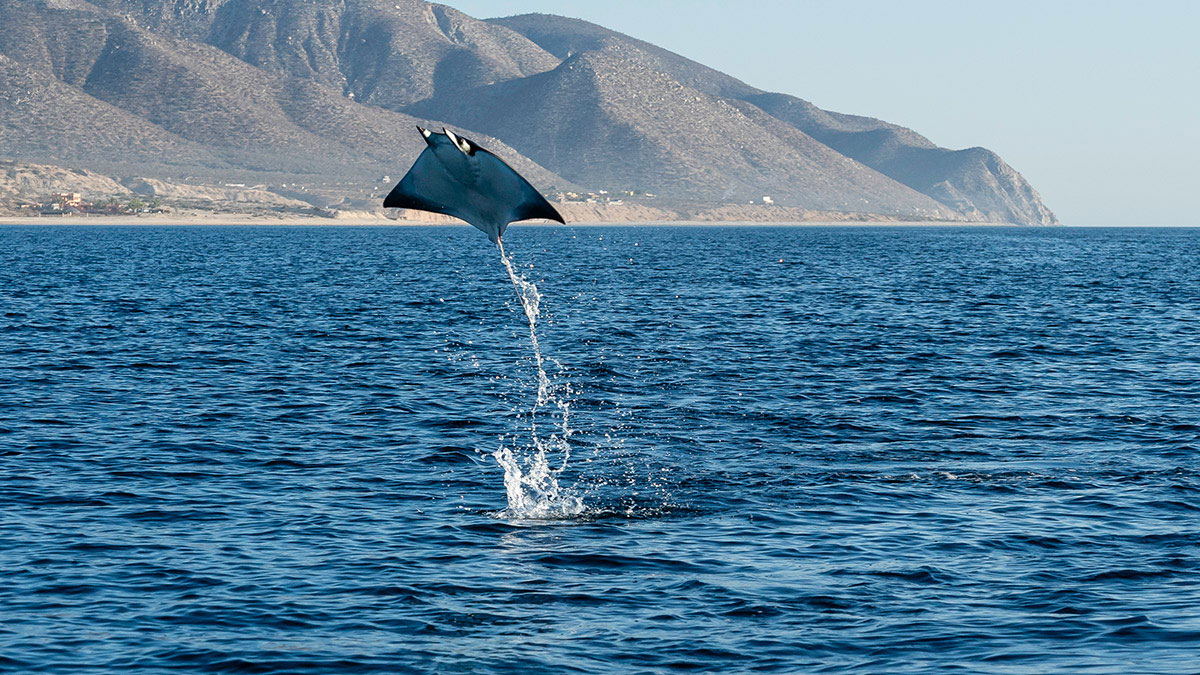St George’s Manta prospect could be part of a large lithium deposit

Manta could be part of a large lithium deposit. Pic via Getty Images.
The intersection of a very thick 102.8m zone of flat-lying and locally fractionated pegmatite is a strong hint for St George that the Manta prospect could be part of a large lithium deposit.
Assays from Hole MAD213, where the continuous interval of pegmatite was observed within a 225m zone comprising multiple pegmatites, provided indications of a wide, multi-phase and locally fractionated pegmatite system.
This has the potential to host lithium mineralisation where the pegmatites are intruded into more prospective host lithologies within the adjacent greenstone sequence at the Mt Alexander project.
St George Mining (ASX:SGQ) adds that the thick flat-lying pegmatite at Manta is modelled by seismic data as a strong, 1,000m diameter circular feature, with additional geophysics and drilling planned to test the wider potential for lithium bearing pegmatites in the area.
Understanding the prospectivity
“Our understanding of the lithium prospectivity continues to grow at Mt Alexander with recent drill results confirming high-grade and anomalous lithium across a wide area,” executive chairman John Prineas said.
He added that the zone of pegmatites intersected in hole MAD213 are the type required for large mineral deposits and that the company will continue to test for potential extensions of the Manta pegmatites within and below the adjacent greenstone belt.
“We have only just begun to realise the wider lithium potential at Mt Alexander with the latest drilling confirming the presence of major structures that can produce wide extensional openings for thick fractionated pegmatites to intrude,” Prineas noted.
“The results for MAD213 confirm that large-scale pegmatite intrusions have occurred and that they are showing signs of prospectivity for lithium. It is now down to identifying the more fractionated lithium-caesium-tantalum (LCT) zone within the pegmatite hosted mineral system.
“We are also encouraged by recent excellent results announced by Delta Lithium at its nearby Mt Ida Project and the confirmation by Hancock Prospecting that it will proceed with a lithium exploration joint venture for Mt Bevan which has ground that wraps around our Mt Alexander tenure.”
Early signs at Manta
The company noted that the mean potassium to rubidium (K:Rb) ratio of 117 derived from the assays for MAD213 highlights the prospectivity of the Manta pegmatite zone as a K:Rb ratio of less than 150 is a favourable indicator of fractionated pegmatites.
It adds that seismic data also indicates the Manta pegmatites appear to have intruded along a relatively flat, regional-scale structure while the thickness of the Manta pegmatites and the association with an interpreted regional-scale structure shows some important similarities with other major lithium deposits in WA.
Further support that the thick pegmatites intersected at Manta represent a distal part of a larger lithium mineralised system stems from the intersection of LCT pegmatites at Mt Alexander.
Jailbreak remains free to expand
Meanwhile, recent drilling at the Jailbreak prospect has confirmed the presence of multiple lithium-bearing pegmatites with assays returning a peak value of 1.28% Li2O.
Importantly for St George, while drilling has now identified lithium-bearing pegmatites across a 2km strike of the prospective corridor, a further 13km length of the corridor that hosts an extensive network of mapped pegmatites has yet to be tested by drilling.
Drilling has also intersected multiple pegmatites that have potential to become thicker at depth, similar to results reported by other explorers in the region.
Notably, the results indicate the potential for stronger mineralisation along strike and down dip from current drilling.
This article was developed in collaboration with St George Mining, a Stockhead advertiser at the time of publishing.
This article does not constitute financial product advice. You should consider obtaining independent advice before making any financial decisions.
Related Topics

UNLOCK INSIGHTS
Discover the untold stories of emerging ASX stocks.
Daily news and expert analysis, it's free to subscribe.
By proceeding, you confirm you understand that we handle personal information in accordance with our Privacy Policy.








